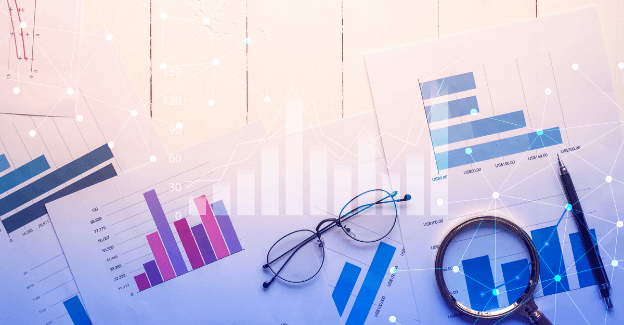What Can Your Procurement Data Tell You?
You might not realize it yet, but your procurement data can tell you a lot. It’s not just numbers either, it can tell you a story about what is going on within your organization -- and even further afield.
So, what can your procurement data actually tell you? Well, you might have already thought of some of the more obvious things, like what you’re spending your money on and where you can find cost savings. But it’s so much more than that. Your procurement data can tell you about the types of suppliers you have, how much you’re spending on certain activities, what you’re buying that you shouldn’t be or don’t need to…your procurement data could even help you spot signs of fraud or embezzlement!
Yes, it can tell you a LOT! Now, you may think that all this is obvious and even common sense but it’s what you do with this data that really matters. What’s the story behind where the money is going and what is it telling you about the culture of your company? Is there lots of “employee morale” spend? If so, you might have a problem. Or are you fostering a reward culture where you recognize great efforts? Either way, spend like this tends to be found on purchasing cards, also known as p-cards.
You can in fact find a lot of interesting spend in p-cards and I have seen it all. From shoeshines, to theater tickets, cable TV, chocolate for lunch, fancy dress, fruity Fridays…
Even the pandemic influenced spend. Suddenly there were lots of desks, chairs, monitors and PPE being purchased for home offices. The data always tell a story.
Procurement data can even help you spot patterns in behavior that you may never have noticed before. Does something peak at a certain time each year or month? Is this causing wider problems to the business? There’s so much to learn if you know where to look!
And on the supplier side, most of the time it’s serious, but there can be fun or weird stuff too. For example, the male escorts, Tom Cruise’s hairdresser, the “mani-pedi meetings” or the hamster guillotine (yup, that’s right it does exist, just don’t ask why. You can’t hide from the truth in the data!).
And then there’s the darker side – fraud. We don’t like to think of it happening in our own companies and by our colleagues, but it does. Someone may have tried to mislead or take advantage of you in some way, and it may be hidden there in the procurement data. Classifying your data and regular maintenance can help with this.
This is why it is also a very good idea to have an external party look over it, because then nobody has a vested interest in hiding what's in the data – they’re just classifying it!
But of course, to access this information, it needs to be clean and accurately classified. You need to make sure the data has its COAT on. Here’s what that means:
It’s Consistent – Generally data is used by many people or teams, which can lead to multiple classifications of one product. For example, one person might put DHL as a “courier” while another might log it as “logistics” or “warehousing.” A taxi might be classified generically as “travel” when it should be classed as “Travel > Road Transport > Taxis” and a project cost should be assigned to the same budget or GL code, not several. Or it could even be as simple as units of measurement. One person may use “Litre,” another “Ltr” and another “L,” but these should all be one format. This means everything can be reported accurately, you get a true picture of what’s going on and better business decisions can be made.
It’s Organized – Data is only useful if it’s organized. Think of a messy closet, you’re looking for your favorite top but can't find it as everything has been thrown in there. And much like your closest, you can organize your data in different ways, depending on what you want to get out of it and that will produce different reports/analytics. You may want to assign data to employees, teams, departments, functions or internal categories, as well as time periods such as months and quarters, or year groups like P1, P2, etc. For example, when you need the information on the accounts that Sharon in Finance is working on, or the sales teams’ performance for the quarter, you can pull that information quickly.
It’s Accurate – This can mean different things to different people. At its most basic level, accurate data is correct. In more detail, this could be no duplicate information; correct invoice descriptions; correct classifications; no missing product codes; standard units of measure (e.g., ltr, l, litres); no currency issues; correctly spelled vendors; fully classified data; or the right data in the right columns.
So, what does this mean? It means greater visibility across your business in several areas, allowing better decisions, as well as time and cost savings and increased profits.
It’s Trustworthy – This is critical. Business decisions around jobs, staffing, budgets, cost savings and more are all based on data. Data is used by everyone from the bottom to the top of an organization. You have to be able to trust that what you’re looking at is the right information, and you need it to be accurate in order for your teams to use the data in their daily jobs.
If they don’t trust the data, then they might not use the fancy new expensive software you’ve just spent tens of thousands of pounds installing. Or the new AI you’ve installed may not produce the right results because it’s learning from dirty data.
So, what does your procurement data tell you? Let me know. Don’t know yet? Why not get in touch!









